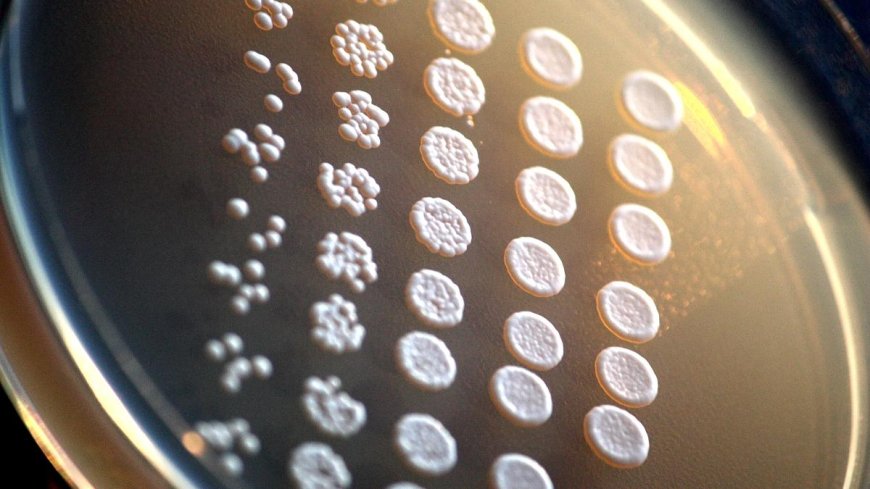The curious case of the yeast modified to develop brain defects

The curious case of the yeast modified to develop brain defects
Asarkari - Sarkari News, Jobs & Updates
An Unlikely Ally in Neuroscience
It might sound like something out of a science fiction novel: humble baker's yeast, the same organism that helps our bread rise, being engineered to show signs of brain defects. Yet, this is precisely what's happening in cutting-edge research labs around the world. Scientists are turning to this simple, single-celled fungus to unlock some of the deepest mysteries surrounding complex human neurological disorders. This innovative approach is paving the way for a better understanding of diseases like Alzheimer's, Parkinson's, and Huntington's, offering new hope for millions.
Why Yeast? The Power of a Simple Model
You might wonder, what could yeast possibly teach us about the intricate workings of the human brain? The answer lies in the fundamental building blocks of life. Yeast, or Saccharomyces cerevisiae as it's known scientifically, shares a surprising amount of genetic and cellular machinery with humans. Many essential cellular processes, such as DNA replication, cell division, and protein production and degradation, are highly conserved across species, from yeast to humans. This makes yeast an incredibly powerful tool for biomedical research.
There are several key advantages to using yeast as a model organism. Firstly, it grows rapidly and is inexpensive to cultivate in a lab setting. Its genome was one of the first to be fully sequenced, and it is exceptionally easy to manipulate genetically. Scientists can readily insert human genes, delete yeast genes, or modify existing ones to study their effects. Furthermore, using yeast sidesteps many of the ethical concerns associated with animal research, especially in the early stages of investigation. These practical benefits allow for high-throughput screening and rapid testing of hypotheses related to disease mechanisms and potential drug targets. For more updates on scientific breakthroughs, visit https://asarkari.com.
Engineering "Brain Defects" in a Dish
So, how do scientists modify yeast to develop what could be analogous to "brain defects"? They typically introduce human genes known to be associated with specific neurological conditions into the yeast cells. For instance, genes that code for proteins prone to misfolding and aggregation in diseases like Alzheimer's (e.g., amyloid-beta) or Parkinson's (e.g., alpha-synuclein) can be expressed in yeast.
When these human disease-associated proteins are produced in yeast, they often cause similar problems at the cellular level as they do in human neurons. The yeast cells might exhibit signs of stress, struggle with protein clumping (aggregation), show impaired mitochondrial function (the cell's powerhouses), or even die prematurely. While yeast doesn't have a brain, these cellular dysfunctions are hallmarks of what goes wrong in brain cells during neurodegenerative processes. By observing these "defects" in yeast, researchers can study the molecular pathways involved in disease progression in a simplified, controlled environment. This allows them to pinpoint critical factors that contribute to cellular toxicity and dysfunction.
From Yeast Insights to Human Therapies
The insights gained from these modified yeast models are invaluable. They help researchers understand the fundamental mechanisms by which faulty genes or proteins lead to cellular damage. For example, studies in yeast have shed light on how protein aggregates form, how they spread toxicity, and what cellular systems try (and often fail) to combat them. This basic knowledge is crucial for developing effective treatments.
Moreover, these yeast models serve as excellent platforms for drug discovery. Scientists can screen thousands of potential drug compounds to see if they can alleviate the "defects" observed in the engineered yeast. A compound that helps yeast cells cope with a toxic human protein, perhaps by preventing its aggregation or boosting cellular defense mechanisms, could become a lead candidate for further development into a therapy for human patients. Several compounds currently in clinical trials for neurodegenerative diseases have roots in discoveries made using simpler model organisms like yeast. The speed and cost-effectiveness of yeast-based screening significantly accelerate the initial phases of the drug development pipeline.
Conclusion: A Small Organism with Big Potential
The curious case of yeast modified to develop cellular traits mimicking brain defects underscores the interconnectedness of life and the power of model organisms in scientific discovery. While yeast will never fully replicate the complexity of the human brain, it provides an accessible and versatile window into the cellular and molecular events that underpin devastating neurological conditions. The ongoing research in this field holds immense promise for unraveling disease mechanisms, identifying new therapeutic targets, and ultimately, developing treatments that can improve the lives of those affected by brain disorders. It's a testament to how even the simplest forms of life can contribute to solving some of humanity's most challenging health problems.
By Priya Sharma, team Asarkari.
kam sabdo me kahein to, vaigyanik manav mastishk doshon ke peeche ke tantron ko samajhne ke liye anuvanshik roop se sanshodhit yeast ka upyog kar rahe hain, jo shodh aur sambhavit upcharon ke liye naye raste pradan karte hain. (Scientists are using genetically modified yeast to understand the mechanisms behind human brain defects, offering new avenues for research and potential therapies.)
Keywords
yeast model brain disorders, genetically engineered yeast, neuroscience research yeast, cellular mechanisms brain defects, Saccharomyces cerevisiae neurological disease, drug discovery model organisms, understanding brain disease yeast, protein misfolding research, neurodegenerative disease modelsWhat's Your Reaction?
 Like
0
Like
0
 Dislike
0
Dislike
0
 Love
0
Love
0
 Funny
0
Funny
0
 Angry
0
Angry
0
 Sad
0
Sad
0
 Wow
0
Wow
0










































